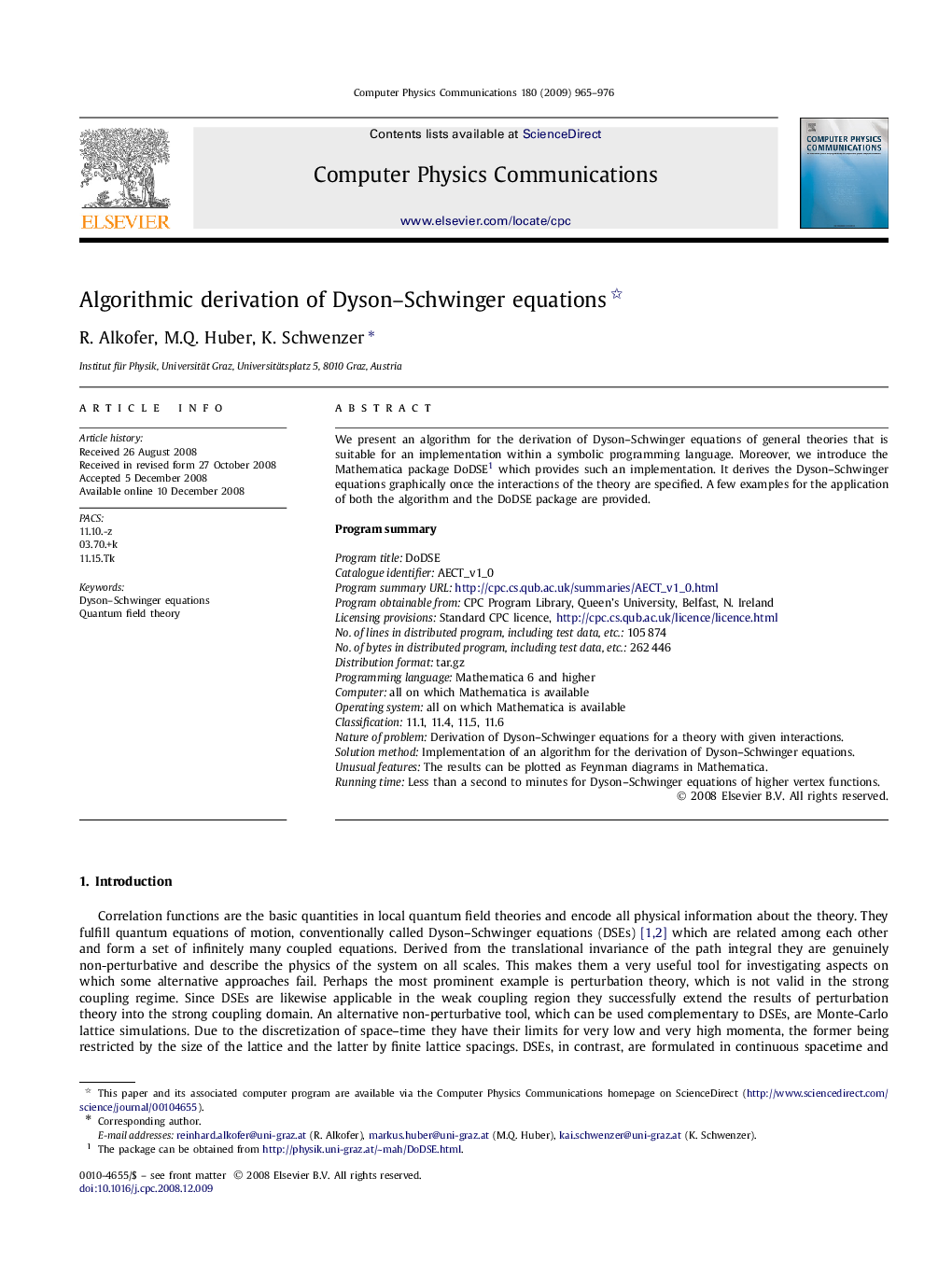| کد مقاله | کد نشریه | سال انتشار | مقاله انگلیسی | نسخه تمام متن |
|---|---|---|---|---|
| 502761 | 863721 | 2009 | 12 صفحه PDF | دانلود رایگان |

We present an algorithm for the derivation of Dyson–Schwinger equations of general theories that is suitable for an implementation within a symbolic programming language. Moreover, we introduce the Mathematica package DoDSE1 which provides such an implementation. It derives the Dyson–Schwinger equations graphically once the interactions of the theory are specified. A few examples for the application of both the algorithm and the DoDSE package are provided.Program summaryProgram title: DoDSECatalogue identifier: AECT_v1_0Program summary URL:http://cpc.cs.qub.ac.uk/summaries/AECT_v1_0.htmlProgram obtainable from: CPC Program Library, Queen's University, Belfast, N. IrelandLicensing provisions: Standard CPC licence, http://cpc.cs.qub.ac.uk/licence/licence.htmlNo. of lines in distributed program, including test data, etc.: 105 874No. of bytes in distributed program, including test data, etc.: 262 446Distribution format: tar.gzProgramming language: Mathematica 6 and higherComputer: all on which Mathematica is availableOperating system: all on which Mathematica is availableClassification: 11.1, 11.4, 11.5, 11.6Nature of problem: Derivation of Dyson–Schwinger equations for a theory with given interactions.Solution method: Implementation of an algorithm for the derivation of Dyson–Schwinger equations.Unusual features: The results can be plotted as Feynman diagrams in Mathematica.Running time: Less than a second to minutes for Dyson–Schwinger equations of higher vertex functions.
Journal: Computer Physics Communications - Volume 180, Issue 6, June 2009, Pages 965–976